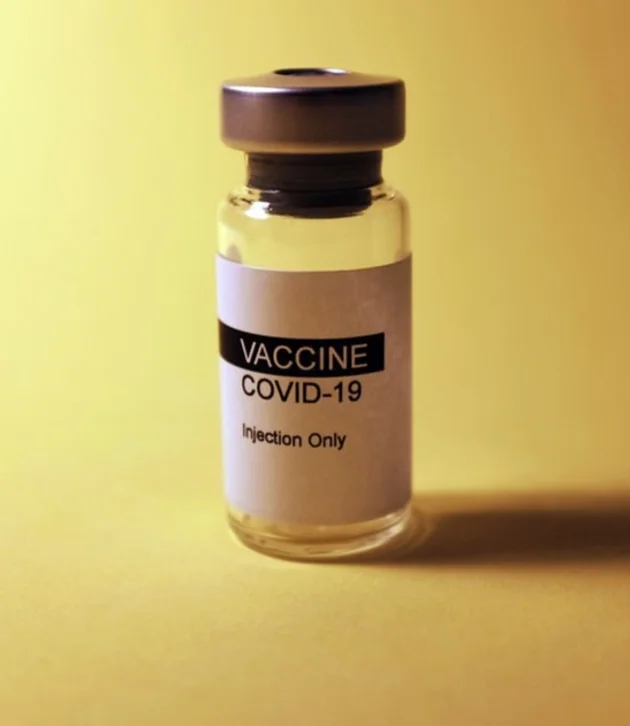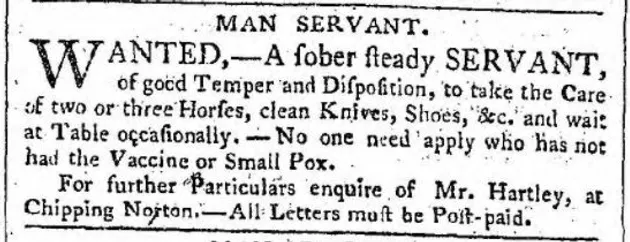The COVID-19 pandemic brought vaccine tensions to the forefront of public discourse. Oxford centred vividly in these discussions, with the rapid development, testing, and implementation of the Oxford-AstraZeneca Vaccine a major success in the fight against COVID-19 worldwide.

As the national vaccine rollout began, the United Kingdom sawn a growing rise in resistance to COVID-19 vaccination programs, with local anti-vaccination protests both in Oxford and nationally.
Yet it is important to remember that these sentiments are not new. Resistance to vaccines has been around since the first use of vaccination, while resistance movements and vaccine hesitancy are deeply tied to underlying social and political factors – both in the past and today.
Inoculation of a form has existed in many different societies worldwide, long before Jenner conducted his cowpox experiments in 1796. It is important when talking about the history of inoculation to recognize that this practice was not the creation of a white Englishman, but had origins in many non-western cultures much earlier. [1]
However, it was in England that Jenner tested an important theory regarding inoculation: that cowpox fluid, when infected into a human, could produce a small pustule and eventually produce immunity from smallpox. This procedure was far safer than traditional inoculation methods, which involved the use of fluid derived from an active smallpox sore on a human.
Early Enthusiasm for Vaccination
In Oxfordshire, there was an early enthusiasm for Jenner’s work. The county already had a strong history of inoculation, with the famous Sutton family running inoculation clinics during the 1790s for anyone who wanted the procedure. One such clinic ran weekly at the Kings Arms pub, inviting people in for a pint and a poke for a few hours each Saturday.
When vaccination was introduced, it was adopted quite quickly in the county. Many notable professors and surgeons associated with the University were the initial reviewers of Jenner’s experiments and his supporters. In the nearby village of Finmere, an enthusiastic rector undertook his own successful experimental trial of vaccination on 300 parishioners in 1799. [2] Within a few year, it had become commonplace in the county, even showing up as requirements for jobs. One advertisement in the Oxford Journal read:
“WANTED – a sober steady Servant of good Temper and Disposition, to take the Care of two or three Horses, clean Knives, Shoes &c. and wait Table occasionally. – No one need apply who has not had the Vaccine or Small Pox.”

Loss of Confidence in Vaccination
However, the early confidence was shaken over time by a number of factors.

Firstly, the safety of the procedure was hotly debated by opponents of the practice. [3] At this point in history, it wasn’t necessarily the most sanitary procedure. Although vaccine lymph was sourced from the pus of a cowpox sore on a cow, when supply was low it was common practice to continue vaccinating through an arm-to-arm method. This meant waiting until a vaccination pustule had erupted on one person, then scraping out the liquid and rubbing it onto a fresh scratch on the arm of a new individual. Unfortunately, any secondary infections already present could be easily transferred as well, including syphilis or tuberculosis. The wound itself was also active for two weeks after the procedure, which gave it a long period of time to potentially become infected. Deaths from septicemia or tetanus infection at the wound site were not unheard of. [4]
Secondly, faith in the procedure was additionally shaken by misinformation. There were a growing number of anti-vaccination writers over the centuries that began to publish vehement attacks on the procedure. One particularly vocal opponent, Dr. William Rowley, published two engravings of supposed deformations that occurred after vaccination. Rowley had briefly been enrolled at St. Alban’s Hall, Oxford, although was prevented from finishing his degree at the University.
Misinformation also stemmed from poorly communicated policy. In 1840, the British government passed a law allowing for Poor Law Unions to contract with local medical practitioners to cover the cost of vaccination for the poor. However, that same year a report circulated through many national and local newspapers, stating “all persons whose children are vaccinated under the provisions of the recent act of Parliament, would consequently be disfranchised as voters.” [5] This was quickly pronounced incorrect by the poor law commissioners, but it nonetheless discouraged many parents from taking advantage of the free service, for fear they would lose voting rights.
Mandatory Vaccination

In 1853, the British Parliament passed an alteration to the Vaccination Act which made vaccination compulsory for all children within three months of birth. Failure to have your child vaccinated would result in a fine of £1 – equivalent to about £80 today.
Compulsory vaccination laws sparked some of the first organised resistance to vaccination within the country. Previously, objections to vaccination were usually voiced individually, while those who were hesitant of the practice could avoid it if they chose. Under the new regulations, the only way to avoid vaccination was to present a certificate of medical exemption, written by a qualified doctor or vaccinator.
This began a new era of medical oversight in the city. Public vaccinators were required to keep detailed records of all children, or new residents to the city. They would judiciously record those who were vaccinated and those who weren’t – reporting returns for each vaccination and submitting a book of records to the Poor Law Board on Thursday each week.
In this way, vaccination became an early mechanism of state recording and tracking of citizens. Vaccinators would record when new children were born, and visit the house of parents at the age of three months to remind them of the requirements. The compulsory laws were revised with even harsher penalties in 1867.
Working Class Hesitancy
In 1848, public vaccinators were officially appointed within the city, with the hopes of increasing vaccination coverage and instituting a system of “universal vaccination.” [6] Designated vaccinators in the Poor Law Unions would allow for greater accessibility to vaccination, which was offered free of charge to all. Despite the new measures, vaccination was still avoided by many of the working-class citizens in the city. Doctors would frequently write letters to the local newspapers to lament the “neglect” of vaccination by so-called “ignorant classes of society.” [7]

Reasons for avoiding vaccination were diverse. They could be based on fear of adverse reactions, religious or personal beliefs, or informed by personal experiences. One mother who had lost a child to smallpox nonetheless refused to have the rest of her children vaccinated because “she would rather lose half-a-dozen children by it than fly in the face of Providence in having one vaccinated.”
Another refuser was a townswoman by the name of Ann Sipple. Sipple was an unwed mother of five children and when her oldest was vaccinated, she said that it had died three days later looking “quite rotten.” [8] Thereafter, she had refused to have any of her children vaccinated. At the police court, the prosecutor told Sipple that she was being ‘obstinate’ and demanded to know where her husband was. When Sipple responded that she had no husband, the verdict went against her, and she was told to pay the fine or be sentenced to seven days’ imprisonment. She was unable to pay the fine and so was imprisoned.
Organised Anti-Vaccination Movements
In response to this perceived “intrusion” on personal rights by mandatory vaccination, Anti-Vaccination Leagues were formed across the country. The first one in Oxfordshire was formed in Banbury, followed by one in Bicester. These societies were led by a mixture of middle-class tradesmen and clergymen, solicitors, and shop-owners. They published pamphlets, letters, and other propaganda defending their cause, demanding to know “why the Government should seek (contrary to our natural instincts) to deprive us of our parental authority?” [9] They also served as active support networks for those who refused to vaccinate their children, providing solicitors for advice if summoned to the magistrate, and even helping to cover the fines in some cases. [10]
Calls were made in 1880 for an Oxford Anti-Compulsory Vaccination League. Self-titled ‘Liberals’ wrote frequently to the papers, taking advantage of the “disturbed political feelings” in the city to promote a society. The ‘anti-Vacs’, as they were colloquially called then, lamented that ‘little Banbury’ had learned the lesson, while “Darker Oxford” had maintained its vaccination leanings. [11] By 1894, it had become an annual tradition in the city for the local anti-vacs to be summoned to the courts to pay their fines. Residents on St. John’s Street, Caroline Street, Aston Street, Walton Well Road and Howard Street were all recorded as consistent objectors. [12]
Middle and upper class women also played a strong role in stirring anti-vaccination fervour. In 1884, a rally was organised and led in Stratford by Miss Jessie Craigen and “a few friends” in support of a blacksmith who had refused to pay his fine and had had his goods seized by the courts. The goods were sold off at a public auction that was well-attended by the anti-vacs, who had arranged for a band to follow Craigen and strike a “lively tune” to gain attention. [13] Craigen purchased the goods herself, and proceeded to give a strong speech to two hundred onlookers about the evils of vaccination, while her friends distributed pamphlets titled “Robbery by Act of Parliament”.

1898 – the Conscientious Objection Clause
After a number of national debates and many inquiries into the subject, the British parliament eventually ruled that those who disagreed with vaccination on moral grounds were allowed to be exempt from the procedure. This clause – known as the ‘conscientious objection’ clause, would be celebrated as a major win for the anti-vacs.
By the end of the year, over two hundred thousand exemptions had been granted across Britain. After an amendment to the clause in 1907 made it easier to attain an exemption, the national rate of abstainers rose to a full 25% of all births nationally. [14]
Most of the individuals who applied for exemptions were working class and female, demonstrating how class and gender inequality led to a distrust in paternalistic medical practice and a rejection of the state regulations.
Legacies
The story of early resistance to vaccination leaves us with a number of takeaways for our understanding of vaccine hesitancy to COVID-19 vaccination. Outbreaks of contagion have always affected the most vulnerable populations in a society the most; not solely through active infection rates but also by the compounded effects of public health measures and societal response.
Over a century later, we are experiencing another outbreak that has disproportionately impacted minority populations, not just in terms of the number of people infected, but also the wide economic and social inequalities that have emerged from the pandemic. These disproportionate numbers have also seen a corresponding rise in vaccine hesitancy. [15]
It is perhaps time to ask if these voices are being given more consideration today, or if the same structural oppressions exist as they did one hundred years ago.
by Paula Larsson
[1] Arthur Boylston, “The origins of inoculation,” Journal of the Royal Society of Medicine vol. 105, no. 7 (2012): 309-13. doi:10.1258/jrsm.2012.12k044
[2] Denise Lambkin, “Smallpox Vaccination,” Oxfordshire Family Historian vol. 20, no. 2 (August 2006): 80-82.
[3] Michael Bennett, War Against Smallpox: Edward Jenner and the Global Spread of Vaccination (Cambridge: Cambridge University Press, 2020): 113-116.
[4] Ibid.
[5] “The Vaccination Act,” Oxford Chronicle and Reading Gazette (28 Nov. 1840): 4.
[6] “Gratuitous Vaccination,” Oxford Chronicle and Reading Gazette (15 Jul. 1848): 2.
[7] “Births, Death, and Marriages,” Oxford University and City Herald (17 Aug. 1850): 3.
[8] “Anti-Vaccination Again,” Oxfordshire Telegraph (25 Aug. 1869): 2.
[9] Joseph Edwd. Malings, Narrative of Three Prosecutions under the Vaccination Act (London: J. Burns, 1873).
[10] Ibid.
[11] “Anti-Vaccination,” Oxford Chronicle and Reading Gazette (07 Feb. 1891): 7.
[12] “Anti-Vaccinators,” Oxford Chronicle and Reading Gazette (09 Jun. 1894).
[13] “Anti-Vaccination,” Banbury Advertiser (13 Nov. 1884): 7.
[14] Nadja Durbach, “Class, Gender, and the Conscientious Objector to Vaccination, 1898-1907,” Journal of British Studies 41 (Jan. 2002): 58.
[15] Mohammad Razai, et al. “Covid-19 vaccine hesitancy among ethnic minority groups,” BMJ (2021): 372.


